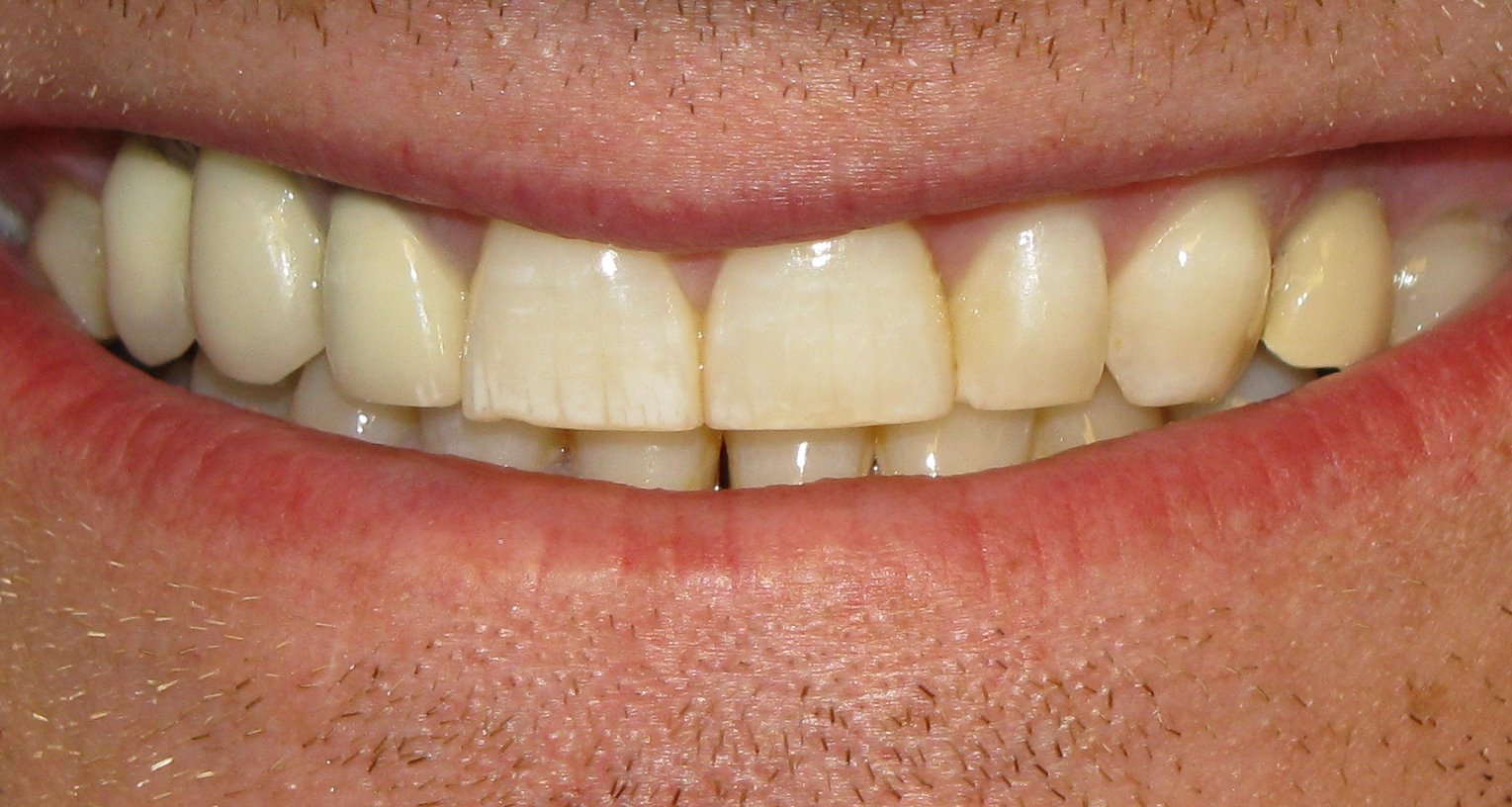According to an article in The Atlantic, overbites developed in the human race just 250 years ago. Most of us have lived or grown up with braces and other contraptions meant to correct tooth misalignment, so it seems weird to us. But Bee Wilson, author of the book Consider the Fork, explains how our utensils changed even the shapes of our jaws, causing the overbite.
We won’t be returning to the caveman style of eating with our hands anytime soon. Let’s meet the challenge with how to fix an overbite.
What Is an Overbite?
An overbite happens when you close your mouth, and your upper teeth extend past your lower teeth. It’s normal for most people to have a small overbite. A dental overbite means the teeth are misaligned; a skeletal overbite means the jaw itself is misaligned. The treatment depends on the kind of overbite.
What Causes Overbites?
Overbites are usually noticeable in growing children or adolescents, as their bodies are still growing and changing. One cause of overbites is some teeth missing in the lower jaw. This is not unheard of, especially if the baby was premature. (Sometimes, it’s genetic.)
Other actions that cause an overbite in the formative years are thumb-sucking and extended pacifier use. The constant sucking movement shapes the still-forming palate forward. A similar habit is constantly pushing the tongue against the front teeth. Unfortunately, short of correcting your baby’s habits when he or she is very wrong, the next step is usually fixing it.
Should You Care About an Overbite?
Some overbites, what they call “Class I” overbites, are usually too small to make any difference in chewing or in dental health. However, what they call “Class II” and “Class III” overbites can cause considerable dental problems. Here are a few:
- Difficulty in keeping teeth clean. The unevenness or misalignment can cause your teeth to have many hard-to-reach corners, causing otherwise preventable cavities.
- Wearing away of enamel. If your teeth are crowded or overlapping, or both, they will rub against each other in an unhealthy way. Enamel is what protects your teeth from cavities and from breakage; if it wears away, your teeth are vulnerable.
- Preventable jaw pain. The crowding or misalignment of your teeth strain your jaw whenever you chew or eat. In more severe cases, this can lead to pain and uncomfortableness.
How Can You Fix an Overbite?
Braces and retainers
Braces and retainers are probably the most familiar dental contraptions to anyone. To solve an overbite, small metal braces are attached to each tooth on the upper jaw. Wires are run through the braces. Every visit to the dentist, the wires are tightened to compress the teeth evenly and pull back the overbite.
Braces are easy to get, cheaper (because multiple dental clinics means competition keeps prices low), and easy to shift dental clinics. However, they are very visible, cannot be removed for eating or other activities, and any lapse in teeth-cleaning makes it easy for cavities to set in. Retainers are removable wire frames that keep newly-braced teeth in place. They can also be used for very mild overbites.
Invisible alignment
You may have heard of Invisalign, which is simply a shortcut way of talking about braces for invisible alignment. Made of clear plastic, molded perfectly to your teeth, Invisalign braces fit around your teeth and keep pressure on them to slowly but surely mold your smile into a straightened and healthier version.
Because it can be removed for eating and other activities, it limits your range of activities less. It also allows your teeth to be freely brushed and cleaned. However, the multiple molds that need to be taken and made require constant dental visits. You might also need to make sure that they don’t discolor, as it would be quite obvious.
Palate expansion
Thumb-sucking or pacifier dependence causes the palate to narrow in a forward motion, causing an overbite. Palate expansion reverses that process. With a palate expander, the palate is encouraged to slowly widen until the overbite is drawn back and the teeth aligned again. This is one of the simpler corrective methods, as it works with natural growth to keep the teeth properly aligned.
The contraption fits under the ceiling and between the molars of the upper jaw. It can require some adjustments when it comes to speaking and eating, and it also requires meticulous cleaning. It’s best to learn how to brush the contraption as well as around it, and also how to use cleansing mouthwash to help it stay completely clean.
Jaw surgery
In the most extreme cases, jaw surgery might be required. This is only when the overbite condition already causes difficulty in breathing, inefficiency in chewing, and danger to health because of the dental misalignment. (Note: Always get a second opinion when it comes to surgery. This should be the last option because it would put your activities on pause for a bit.)
Surgery requires cutting into the bone and allowing it to heal itself after resetting the jaw in the correct position. Sometimes it means using palate expansion at the same time so the jaw will reset properly. However, after the healing, the permanence of the surgery means it’s not something you need to think about afterwards.
Fixing an Overbite: What Works for You
Often, the question of how to fix an overbite is more a question of preference and budget than anything else. The more important question to ask is, will it improve my health or my child’s health (both dental and psychological)? If the answer is yes, you need only to decide on how.

